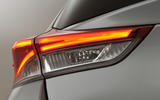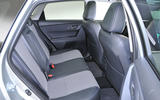“A deeply rational, unemotional choice”: Autocar’s road test of the Toyota Auris hit the nail on the head.
It is exactly that, and it’s a justifiable criticism of the model as a new car, but as a used one it’s a compliment. After all, who, faced with a sea of questionable, second-hand motors, wouldn’t prioritise being rational over emotional?
True, you can be both and still come out on top, but for the rest of us, haunted by past indiscretions, a used, second-generation Auris looks like a safe haven.
It was launched in 2013 in five-door hatch and Touring Sports estate forms. Toyota said the Volkswagen Golf Mk6 had been its benchmark when designing the new models. They’re certainly proving to be just as durable but otherwise the old Golf aces them on just about every measure bar perhaps the Auris’s hybrid technology.
The 134bhp 1.8-litre VVT-h engine can do a claimed 70mpg, although expect closer to 50mpg, and a little over one mile on battery power alone.
It’s a technical marvel paired with a clever automatic gearbox that enables the system to transition between power sources, or even combine them, and ensures the engine runs at its most efficient revs. The result is a quiet, smooth and relaxing drive, albeit one lacking in verve.
The VVT-h was certainly a popular choice such that today almost two-thirds of the hatchbacks and nearly all of the Touring Sports advertised for sale are this version.
The remaining engines include a handful of petrols, easily the best being the smooth and gutsy 114bhp 1.2T, introduced in 2015. The two diesels, an 89bhp 1.4 D-4D and a 109bhp 1.6D, are less impressive: they’re sluggish and rattly. In Euro 6 guise, they’re particularly thin on the ground too.














































